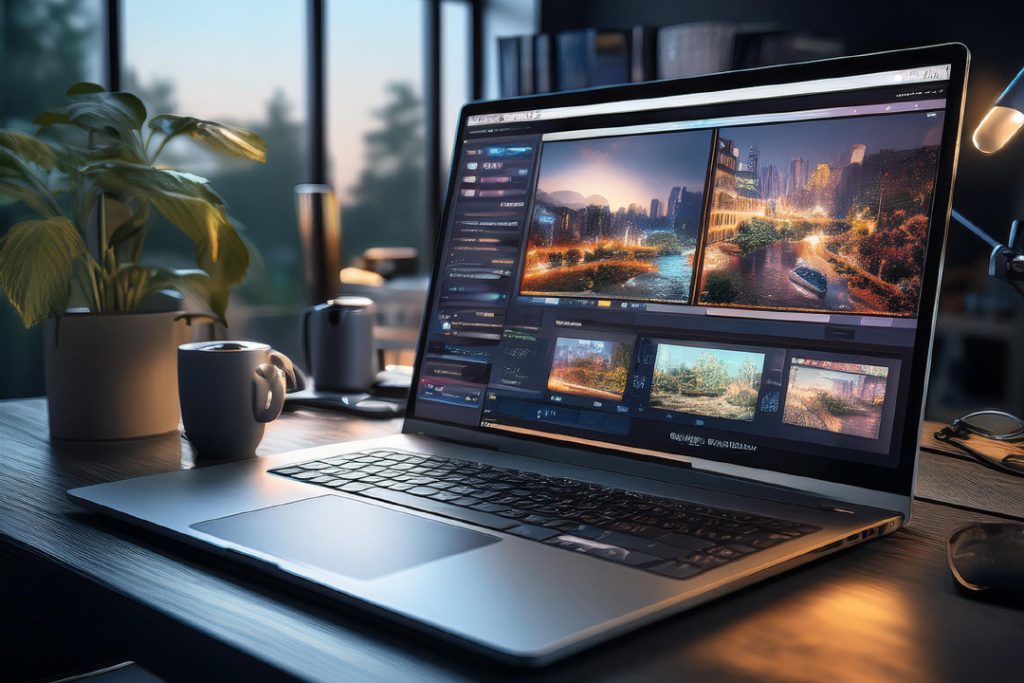Smart Home Security Basics
Understanding DIY Systems
When I started looking into DIY smart home security systems, I was thrilled to discover just how straightforward and effective they could be. Unlike traditional security setups, DIY systems are designed for easy self-installation, which means I didn’t need to hire a professional or pay those hefty installation fees. These systems come with everything I need to secure my home, from security cameras to smart locks.
DIY home security systems are incredibly flexible. I could tailor the system to fit my specific needs and even integrate it with my existing smart home devices. This means I could add cameras, video doorbells, smart thermostats, and more, all controlled from a single app on my phone. For someone who loves tech and gadgets, this was a game-changer! Check out more about integrating home automation into your productivity here.
Benefits of DIY Security
The benefits of DIY smart home security systems are numerous, and they definitely outweigh the drawbacks for me. First off, they’re cost-effective. By opting for a DIY system, I saved on installation costs and avoided the recurring monthly fees associated with professional monitoring services (US News). This made it a budget-friendly option in the long run, even though I had to invest some time into getting everything set up.
Another major perk is customization. I could start small with just a few essential components and expand my system as my needs and budget grew. This flexibility was perfect for my small apartment, and it meant I could easily take my system with me if I decided to move (US News).
DIY systems are also well-suited for integrating with other smart home technologies. For example, I could connect my security system with smart lighting and voice assistants like Amazon Alexa or Google Assistant, creating a seamless and automated home environment. For more ideas on smart home office setups, visit here.
| Benefits | Description |
|---|---|
| Cost-Effective | Saves on installation and monthly fees |
| Customizable | Easily tailored to specific needs and expandable |
| Portable | Ideal for small living spaces and easy to move |
| Smart Integration | Seamlessly connects with other smart home devices |
In summary, diving into DIY smart home security not only provided me with peace of mind but also allowed me to enhance my home with the latest technology, all while keeping costs down.
Top DIY Smart Home Security Systems
When it comes to securing my home while working remotely, I want a system that is reliable, easy to set up, and integrates seamlessly with my existing smart home devices. Here are the top DIY smart home security systems that have caught my attention.
Ring Alarm Kit (2nd-gen)
The Ring Alarm Kit (2nd-gen) is an excellent choice for smaller homes. It offers a reliable platform that can easily connect to any Amazon Echo or Alexa devices. This makes it super convenient to manage and control the system using voice commands or through an app on my phone.
The kit includes:
- A base station
- A keypad for arming/disarming
- Four contact sensors
- A motion detector
- A range extender
According to CNET, the Ring Alarm Kit provides great value at a reasonable price.
| Component | Included |
|---|---|
| Base Station | Yes |
| Keypad | Yes |
| Contact Sensors | 4 |
| Motion Detector | 1 |
| Range Extender | 1 |
For more information on how to integrate this system into your home office, check out diy smart home office setup.
SimpliSafe Home Security System
SimpliSafe offers a variety of starter kits starting at around $320, making it another strong contender. This system is known for its flexibility, ease of use, and excellent value (PCMag).
The SimpliSafe system includes:
- Indoor and outdoor security cameras
- Key fobs
- Additional motion sensors
- Smoke detectors
- Glass break sensors
- A siren
A subscription plan starting at around $10 per month is necessary to access all features (CNET).
| Component | Included |
|---|---|
| Indoor/Outdoor Cameras | Yes |
| Key Fobs | Yes |
| Motion Sensors | Yes |
| Smoke Detectors | Yes |
| Glass Break Sensors | Yes |
| Siren | Yes |
Explore more about enhancing your workspace security with home automation for productivity.
Vivint Smart Home Security System
For those who prefer a professionally monitored system without the installation hassles, the Vivint Smart Home security system is ideal. It provides 24/7 monitoring and full control over door locks, cameras, thermostats, and lights (PCMag).
Vivint offers:
- 24/7 professional monitoring
- Smart control over home devices
- Integration with smart locks, cameras, thermostats, and lights
This system is perfect for homeowners who want comprehensive security and smart home automation in one package.
| Component | Included |
|---|---|
| Professional Monitoring | Yes |
| Smart Locks | Yes |
| Cameras | Yes |
| Thermostats | Yes |
| Lights | Yes |
For more tips on maximizing your smart home setup, visit diy smart home office setup.
Choosing the right DIY smart home security system can make a significant difference in ensuring the safety and productivity of a remote workspace. Whether it’s the affordability of Ring, the flexibility of SimpliSafe, or the comprehensive coverage of Vivint, there’s a solution for every need.
Enhancing Security with DIY Systems
Enhancing the security of my home is exciting, especially with the flexibility and customization options that DIY smart home security systems offer. By integrating these systems with other smart home devices, I can create a seamless, efficient, and secure environment. In this section, I’ll explore the customization options and integration possibilities that make DIY security systems stand out.
Customization Options
One of the most appealing aspects of DIY smart home security systems is their adaptability. I can tailor the system to meet my specific needs and preferences, ensuring comprehensive protection without unnecessary components.
| Feature | Customization Options |
|---|---|
| Security Cameras | Indoor and outdoor options, various brands like Ring and Arlo |
| Motion Detection | Adjustable sensitivity, customizable activity zones |
| Smart Locks | Keyless entry, remote access, and integration with security systems |
| Environmental Sensors | Smoke detectors, carbon monoxide alarms, water leak sensors |
Selecting the right security cameras is crucial. Brands like Ring and Arlo offer weather-resistant cameras for outdoor use, while indoor cameras like Wyze Cam Pan and Nest Cam Indoor can monitor high-traffic areas and valuables (StaySafe.org). Additionally, adjusting the sensitivity of motion detection and setting up activity zones helps avoid false alarms.
Integration with Smart Home Devices
Integrating my DIY security system with other smart home devices enhances both security and convenience. Here are some ways to achieve a connected and efficient smart home:
- Smart Displays and Voice Assistants: Pairing security cameras with smart displays like Amazon Echo Show or Google Nest Hub allows me to view live feeds with voice commands.
- Smart Lighting: Integrating smart lights with the security system can automatically turn on lights when motion is detected, deterring potential intruders.
- Environmental Sensors: Adding smoke detectors, carbon monoxide alarms, and water leak sensors from brands like Nest and First Alert provides comprehensive protection against various hazards.
By integrating these elements, I can create a cohesive and intelligent home security setup. For more ideas on enhancing your home environment with smart technology, check out our articles on home automation for productivity and diy smart home office setup.
With these customization options and integration possibilities, I can confidently secure my home while enjoying the convenience and efficiency that smart home technology offers.
Factors to Consider
When choosing the best DIY smart home security system for your needs, there are several important factors to consider. As someone who loves the idea of blending security with smart home technology, I want to share some key points that helped me make an informed decision.
Cost Comparison
One of the main advantages of DIY security systems is their cost-effectiveness. You can save on installation fees and avoid the high monthly costs associated with professional monitoring services. According to StaySafe.org, DIY systems allow homeowners to tailor the system to their specific needs without breaking the bank.
| System | Initial Cost | Monthly Fees | Installation Fees |
|---|---|---|---|
| Ring Alarm Kit (2nd-gen) | $199.99 | $10 | $0 |
| SimpliSafe Home Security System | $229.96 | $14.99 | $0 |
| Vivint Smart Home Security System | $599.99 | $29.99 – $49.99 | $99 – $199 |
Installation Process
DIY home security systems are designed to be user-friendly, allowing you to set them up without professional help. This self-installation setup eliminates the need for additional setup fees. However, keep in mind that you will need to invest your own time into the installation and configuration of the system. If you’re not tech-savvy, this might be a bit challenging, but the satisfaction of doing it yourself is worth it (US News).
Professional installation, on the other hand, ensures that your system is set up correctly. Companies like Vivint and ADT provide expert installation and professional monitoring services, but this comes at a higher cost. Installation fees for these services typically start in the triple digits, while monthly monitoring fees can range from $10 to $60 (CBS News).
Monitoring Services
One of the biggest differences between DIY and professionally installed systems is the monitoring service. DIY systems often offer self-monitoring options, allowing you to monitor your home through a mobile app. This can be more budget-friendly in the long run, but it does require you to be vigilant. Some DIY systems also offer optional professional monitoring for an additional fee.
| System | Self-Monitoring | Professional Monitoring |
|---|---|---|
| Ring Alarm Kit (2nd-gen) | Yes | Yes ($10/month) |
| SimpliSafe Home Security System | Yes | Yes ($14.99/month) |
| Vivint Smart Home Security System | No | Yes ($29.99 – $49.99/month) |
Professionally installed systems usually come with 24/7 professional monitoring services, which can provide peace of mind. These services ensure that any security breaches are immediately addressed, and emergency services are contacted if necessary. However, this convenience comes at a cost, with higher upfront expenses and ongoing monitoring fees (US News).
When deciding on a DIY smart home security system, consider the cost, ease of installation, and the type of monitoring that suits your needs. For more insights on integrating security with your smart home setup, check out our article on home automation for productivity.
Smart Home Security Components
When setting up your own DIY smart home security system, it’s essential to understand the key components that will keep your home safe and secure. Here are three fundamental elements that you should consider: the master control panel, security cameras, and smart locks.
Master Control Panel
The master control panel is the heart of any DIY smart home security system. This central hub displays all the information you need and acts as the base station for the alarm system. Modern systems allow you to control the master panel remotely via your smartphone, making it incredibly convenient for those of us working from home. According to Vivint, the master control panel is essential for monitoring all other security components in your home.
| Feature | Description |
|---|---|
| Control | Central hub for all security devices |
| Display | Shows system status and alerts |
| Remote Access | Can be controlled via smartphone |
Security Cameras
Security cameras are crucial for monitoring your home, both inside and out. Outdoor security cameras capture footage near and around your property, while indoor cameras provide a 360-degree view of the interior. These cameras are durable and designed to catch intruders, giving you peace of mind. As highlighted by Vivint, having both types of cameras ensures comprehensive coverage of your home.
The Google Nest Cam (two-pack) is an excellent choice for DIY enthusiasts, offering advanced features like 1080p HDR video, night vision, and the ability to differentiate between people, animals, and vehicles.
| Camera Type | Features | Best Use |
|---|---|---|
| Outdoor Security Camera | Weather-resistant, night vision | Monitoring exterior |
| Indoor Security Camera | 360-degree view, motion detection | Monitoring interior |
Smart Locks
Smart locks are a game-changer for home security. These electromechanical locks provide keyless entry and enhanced security, making them ideal for remote workers who need easy yet secure access to their homes. Smart locks are safe from hackers and offer convenient access for children coming home from school, as noted by Vivint.
| Feature | Description |
|---|---|
| Keyless Entry | Access via smartphone or code |
| Security | Safe from hackers |
| Convenience | Easy access for family members |
By incorporating these components into your DIY smart home security system, you can ensure a safe and secure environment while working from home. For more tips on enhancing your home office setup, check out our guide on diy smart home office setup. And if you’re looking to boost productivity through home automation, visit our article on home automation for productivity.
Tips for Effective DIY Security
When it comes to DIY smart home security systems, there are several key tips to ensure your home is safe and secure. As a young homeowner working remotely, you want to protect your space without sacrificing style or convenience. Here are my top tips for making the most of your DIY security setup.
Selecting the Right Cameras
Choosing the right security cameras is crucial. You want cameras that are reliable, weather-resistant, and offer versatile mounting options for both indoor and outdoor use. Popular brands like Ring and Arlo provide excellent outdoor cameras, while Wyze Cam Pan and Nest Cam Indoor are great for indoor monitoring (StaySafe.org).
| Camera Type | Recommended Brands | Features |
|---|---|---|
| Outdoor | Ring, Arlo | Weather-resistant, versatile mounting |
| Indoor | Wyze Cam Pan, Nest Cam Indoor | High-traffic monitoring, easy setup |
For more tips on setting up your home office with these cameras, check out our guide on diy smart home office setup.
Utilizing Motion Detection
Motion detection is a game-changer for DIY security systems. It allows cameras to detect movement and trigger alerts, keeping you informed of any activity around your home. Fine-tuning the camera’s sensitivity and setting up activity zones can help avoid false alarms. Brands like Ring and Arlo offer intuitive apps for customizing motion detection settings and receiving real-time notifications (StaySafe.org).
To maximize the effectiveness of motion detection:
- Adjust sensitivity settings to reduce false alarms.
- Create activity zones to focus on specific areas.
- Use the app to receive instant alerts on your phone.
For additional insights on how to use this technology effectively, see our article on home automation for productivity.
Integrating Smart Home Technology
Integrating smart home technology with your DIY security system enhances both convenience and security. Pairing security cameras with smart displays like Amazon Echo Show or Google Nest Hub allows you to view live feeds using voice commands. Additionally, integrating smart lighting can automatically turn on lights when motion is detected, adding an extra layer of security (StaySafe.org).
Here are some integration options to consider:
- Smart Displays: Amazon Echo Show, Google Nest Hub
- Smart Lighting: Philips Hue, LIFX
By integrating these technologies, you can create a seamless and efficient security system that not only protects your home but also enhances your daily routine. For more tips on smart home integrations, read our guide on home automation for productivity.
These tips will help you create an effective and stylish DIY smart home security system, giving you peace of mind as you work from home.
Here some recommended links selected for you: The Best Books of the Month, Todays best Deals at Amazon, Best Sellers in Cell Phones & Accessories and last but not least the easy and great way to send a gift for the holidays: Amazon.com eGift Card (Instant Email or Text Delivery).



